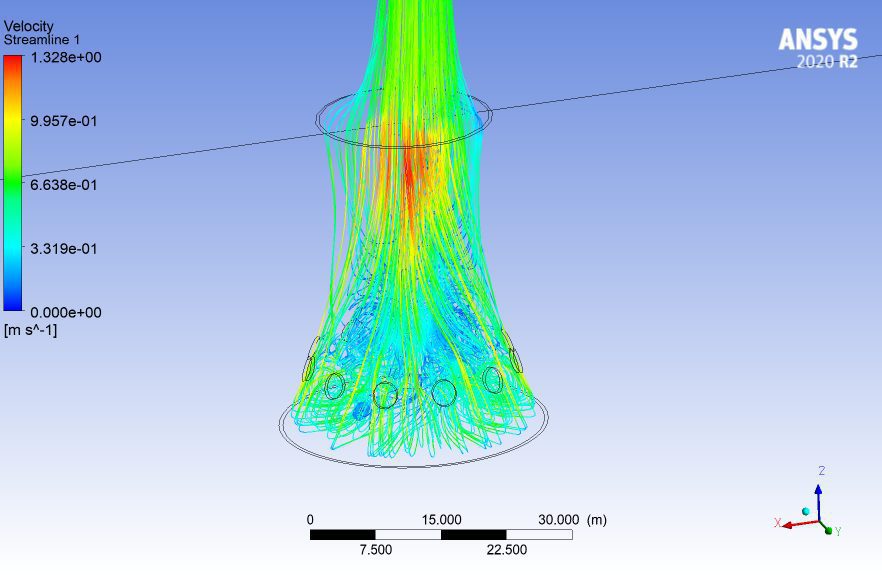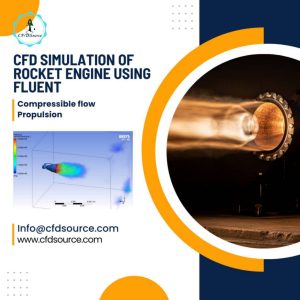Computational Fluid Dynamics (CFD) is a specialized field that combines fluid mechanics, numerical analysis, and computer science to simulate and analyze fluid flow phenomena. It plays a crucial role in various industries, from aerospace and automotive engineering to energy production and biomedical applications. For undergraduate students aspiring to pursue a career in this exciting field, engaging in CFD projects can provide valuable hands-on experience and enhance their understanding of fluid dynamics. In this article, we will explore the realm of CFD projects tailored specifically for undergraduate students.
read more : CFD Consulting Services
Understanding Computational Fluid Dynamics
Introduction to Computational Fluid Dynamics
Computational Fluid Dynamics (CFD) is a discipline that employs mathematical models, numerical algorithms, and computational power to simulate and analyze fluid flow behavior. It enables engineers and scientists to gain insights into complex fluid phenomena that are otherwise difficult or impossible to study experimentally.
Applications of Computational Fluid Dynamics
CFD finds extensive applications in a wide range of industries. It is used to optimize the design of aerodynamic surfaces, simulate blood flow in medical devices, analyze heat transfer in industrial processes, and even predict weather patterns. The ability to visualize and analyze fluid behavior computationally has revolutionized the way engineers approach various challenges.
Importance of CFD in Engineering
CFD plays a crucial role in engineering disciplines, allowing engineers to optimize designs, reduce costs, and improve performance. It provides a deeper understanding of fluid dynamics, enabling the development of more efficient and reliable systems. By utilizing CFD, engineers can make informed decisions based on accurate simulations, ultimately leading to enhanced product development and problem-solving.
Why Engage in CFD Projects as an Undergraduate Student?
Practical Application of Theoretical Knowledge
Engaging in CFD projects as an undergraduate student offers a unique opportunity to bridge the gap between theoretical concepts and real-world applications. By applying principles learned in fluid mechanics and numerical analysis courses, students can witness firsthand how these concepts manifest in practical scenarios. This hands-on experience enhances their understanding and reinforces theoretical knowledge.
Skill Development
CFD projects provide a platform for undergraduate students to develop valuable skills that are highly sought after in the industry. By working on projects involving geometry preparation, mesh generation, solver configuration, and post-processing, students refine their computational and problem-solving abilities. These skills, coupled with a strong foundation in fluid dynamics, make them competitive candidates for future job opportunities.
Enhanced Career Prospects
In today’s competitive job market, employers value candidates who possess practical experience and a strong understanding of CFD. Engaging in CFD projects during undergraduate studies demonstrates initiative, passion, and the ability to apply knowledge to real-world problems. This experience can set students apart from their peers and open doors to exciting career opportunities in industries that rely heavily on fluid dynamics analysis.
Choosing a CFD Project
Identifying Personal Interests
When selecting a CFD project, it is crucial for undergraduate students to consider their personal interests. Whether it’s aerospace, automotive, energy, or biomedical engineering, choosing a project aligned with their passion ensures a rewarding and engaging experience. By working on topics that captivate their interest, students are more likely to remain motivated throughout the project.
Considering Available Resources
Undergraduate students should assess the resources available to them when choosing a CFD project. These resources include access to computational facilities, software licenses, and guidance from professors or researchers. By considering these factors, students can select projects that align with their available resources, maximizing their chances of success.
Collaborating with Professors and Peers
Collaboration is an essential aspect of any CFD project. Undergraduate students should actively seek guidance from professors and collaborate with peers who share similar interests. Engaging in discussions, sharing insights, and seeking feedback can significantly enhance the quality of the project and contribute to a rich learning experience.
Popular CFD Projects for Undergraduate Students
Airfoil Analysis and Optimization
Airfoil analysis involves studying the aerodynamic properties of wings and airfoils. Undergraduate students can explore different design parameters, simulate airflow over various profiles, and optimize them for specific performance criteria such as lift-to-drag ratio or maximum lift coefficient.
Fluid-Structure Interaction
Fluid-Structure Interaction (FSI) projects involve studying the interaction between fluid flow and deformable structures. Undergraduate students can investigate the behavior of flexible structures subjected to fluid forces, enabling them to gain insights into the dynamic behavior of objects in fluid environments.
Heat Transfer Simulation
Heat transfer simulation projects focus on studying temperature distribution and heat flow in different systems. Undergraduate students can simulate heat transfer mechanisms in various scenarios, such as electronic cooling, energy-efficient building designs, or optimizing heat exchangers.
Turbulence Modeling
Turbulence modeling projects allow undergraduate students to explore the complex nature of turbulent flows. They can learn to apply different turbulence models and study the effects of turbulence on flow behavior, making it an excellent choice for those interested in a deeper understanding of fluid dynamics.
Combustion Analysis
Combustion analysis projects involve studying the combustion process in engines, furnaces, or other combustion-based systems. Undergraduate students can simulate and analyze combustion phenomena, optimize fuel-air mixtures, and explore emission reduction strategies.
Wind Tunnel Testing
Wind tunnel testing projects provide an opportunity to validate CFD simulations against experimental data. Undergraduate students can design and fabricate models, conduct experiments in wind tunnels, and compare their results with computational predictions, further enhancing their understanding of fluid flow phenomena.
Getting Started with a CFD Project
Acquiring the Necessary Software
To embark on a CFD project, undergraduate students must acquire the necessary software tools. Many reputable software packages, such as ANSYS Fluent, COMSOL Multiphysics, or OpenFOAM, offer student editions or academic licenses. These software packages provide the required tools for geometry modeling, mesh generation, simulation setup, and post-processing.
Learning CFD Principles and Techniques
Before diving into a CFD project, it is crucial for undergraduate students to have a solid foundation in fluid mechanics and numerical analysis. Understanding the governing equations, discretization methods, and numerical algorithms used in CFD simulations is essential. Online tutorials, textbooks, and university courses can serve as valuable resources for learning these principles.
Preparing the Geometry and Mesh
Geometry preparation involves creating or importing the geometrical model of the system under study. Undergraduate students can utilize software tools to build 3D models or import existing ones. Once the geometry is ready, the next step is mesh generation. Meshing involves dividing the geometry into a discrete grid of elements, enabling the numerical solution of the governing equations.
Defining Boundary Conditions
Boundary conditions play a crucial role in CFD simulations. Undergraduate students need to define the appropriate boundary conditions for their projects, including inflow, outflow, wall, and symmetry conditions. These conditions ensure that the simulation accurately represents the real-world scenario being analyzed.
Running the Simulation
With the geometry, mesh, and boundary conditions in place, undergraduate students can proceed with running the simulation. They need to configure the solver settings, specify the desired simulation time, and select appropriate numerical schemes and turbulence models. Running the simulation requires computational resources, and it is essential to ensure the availability of sufficient computing power.
Post-Processing and Analysis
Once the simulation is complete, undergraduate students can analyze the results using post-processing tools provided by the software. They can visualize flow patterns, extract relevant quantities such as forces or heat transfer coefficients, and compare the results with theoretical predictions or experimental data. Post-processing enables a comprehensive understanding of the fluid flow behavior in the system under study.
Challenges and Tips for Success
Dealing with Convergence Issues
Convergence issues are common in CFD simulations, especially for complex flow phenomena. Undergraduate students should carefully monitor convergence criteria and adjust solver settings if necessary. They can employ techniques like grid refinement, turbulence model selection, or adjusting numerical schemes to overcome convergence challenges.
Optimizing Computational Resources
CFD simulations can be computationally demanding, requiring significant computational resources. Undergraduate students should optimize their simulations by selecting appropriate discretization schemes, reducing mesh size where possible, and utilizing parallel processing capabilities if available. Optimizing computational resources ensures efficient and timely completion of CFD projects.
Validating Simulation Results
Validation of simulation results is essential to ensure the accuracy and reliability of CFD projects. Undergraduate students should compare their simulation results with theoretical predictions or experimental data whenever possible. Validating the results strengthens confidence in the project outcomes and enhances the overall learning experience.
Collaborating and Seeking Guidance
CFD projects can be complex and challenging, making collaboration and guidance crucial for success. Undergraduate students should actively engage with professors, researchers, or experienced peers to seek advice, share insights, and gain additional perspectives. Collaborative environments foster learning and enable the exchange of ideas, contributing to the development of well-rounded CFD projects.
Conclusion
Engaging in CFD projects as an undergraduate student offers a gateway to the fascinating world of computational fluid dynamics. It provides an opportunity to apply theoretical knowledge, develop valuable skills, and enhance career prospects in industries that heavily rely on fluid dynamics analysis. By carefully choosing a project, acquiring the necessary resources, and utilizing the right tools and techniques, undergraduate students can embark on a fulfilling journey that nurtures their passion for CFD and prepares them for future endeavors in this exciting field.



